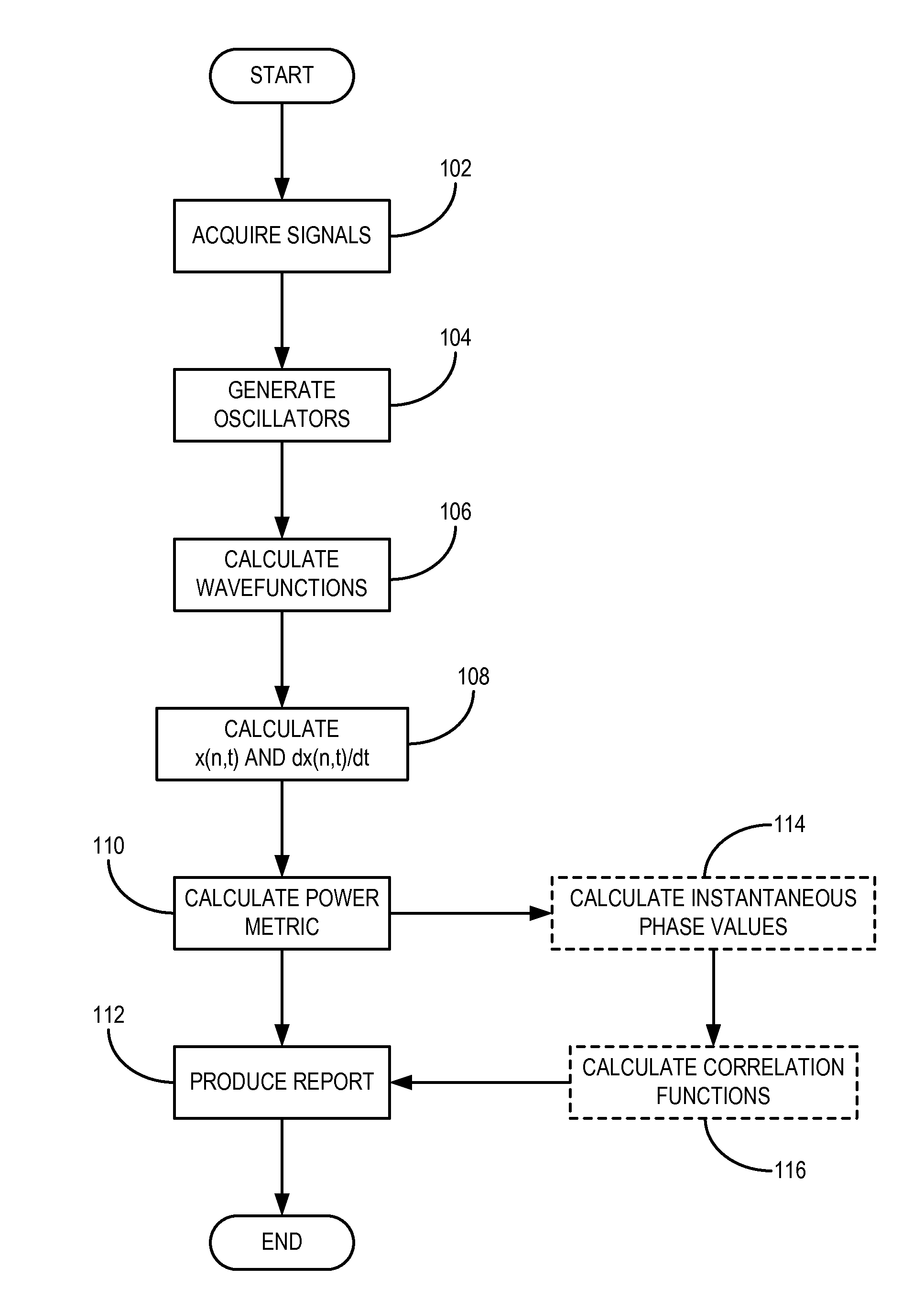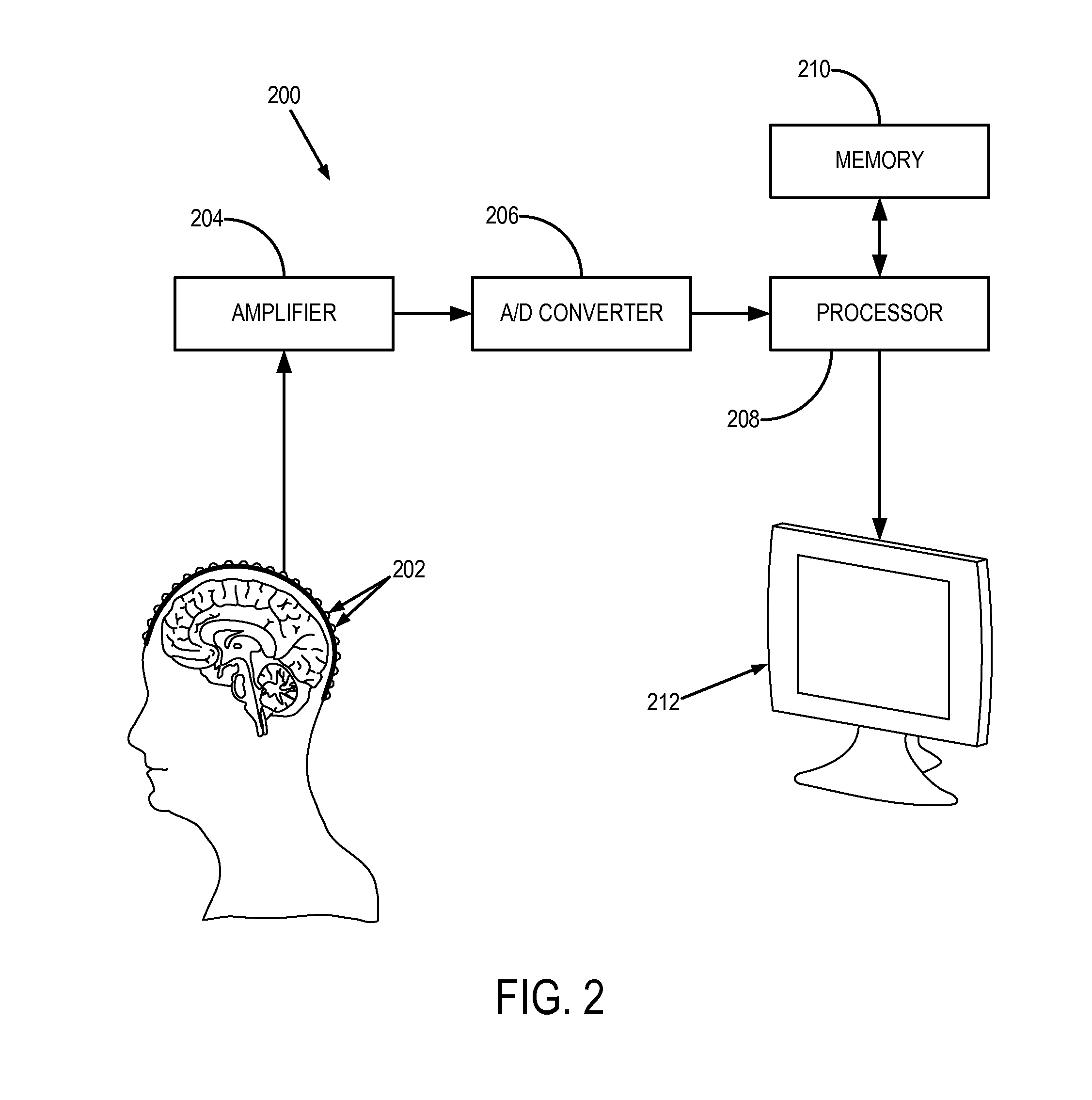Method for data oscillator detection using frictionally damped harmonic oscillators
- Summary
- Abstract
- Description
- Claims
- Application Information
AI Technical Summary
Benefits of technology
Problems solved by technology
Method used
Image
Examples
Embodiment Construction
[0015]The present invention provides a so-called damped-oscillator oscillator detector (“DOOD”) pseudo-wavelet for detecting oscillations in an acquired signal, such as an electrophysiological signal indicative of neuronal or other bioelectrical activity. Generally, the DOOD pseudo-wavelet provides a mathematical model for oscillating signals that generates mathematical oscillators that are analogous to mechanical oscillators. One approach to generating the DOOD oscillators is to generate a set of mathematical harmonic oscillators, each of which has its own natural frequency of oscillation. Then, a time series of data, such as an electrophysiological signal, serves as a driving force that acts upon each mathematical harmonic oscillator. Thus, starting with the mathematical oscillators all at rest, the time series data will drive activity in the mathematical oscillators. If there is an oscillation in the data (a “data oscillator”) that is substantially resonant with one of the genera...
PUM
 Login to View More
Login to View More Abstract
Description
Claims
Application Information
 Login to View More
Login to View More - R&D
- Intellectual Property
- Life Sciences
- Materials
- Tech Scout
- Unparalleled Data Quality
- Higher Quality Content
- 60% Fewer Hallucinations
Browse by: Latest US Patents, China's latest patents, Technical Efficacy Thesaurus, Application Domain, Technology Topic, Popular Technical Reports.
© 2025 PatSnap. All rights reserved.Legal|Privacy policy|Modern Slavery Act Transparency Statement|Sitemap|About US| Contact US: help@patsnap.com



